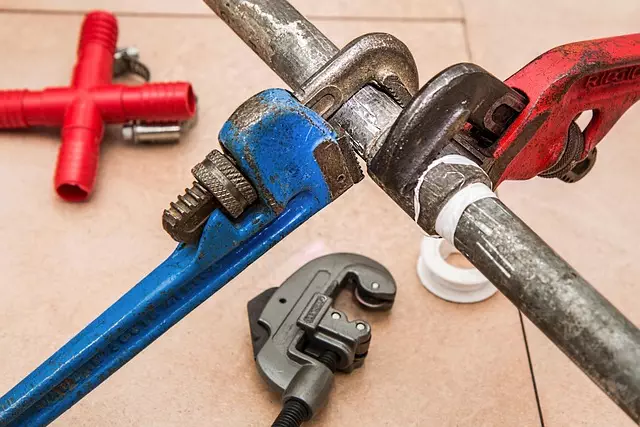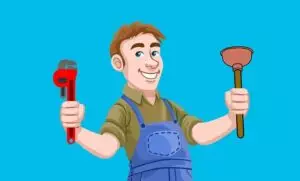Homeowners should learn basic pipe repair techniques for addressing leaks and clogs. Start by identifying issues, assessing damage, and consulting professionals. Advanced tools and materials enhance repair durability. Regular maintenance prevents major problems. Choosing a licensed plumber with experience ensures quality repairs. Modern innovations like PEX pipes and smart plumbing technologies offer efficient, eco-friendly solutions. Case studies highlight successful pipe repair projects in diverse settings.
Plumbing pipe repairs are an inevitable part of home ownership, but understanding the solutions can save you time and money. This comprehensive guide delves into the world of pipe repair, offering insights on identifying leaks and clogs, assessing damage, and choosing the right tools for the job. From maintenance tips to recognizing when replacement is necessary, we explore modern innovations and successful case studies, empowering homeowners with knowledge in the realm of pipe repair.
Understanding Common Pipe Repairs: Leaks and Clogs

Leaks and clogs are among the most common issues that homeowners often encounter with their plumbing pipes, highlighting the importance of knowing basic pipe repair techniques. A leak, whether in the walls or on the surface, can lead to significant water damage and increased utility bills. Identifying the source of the leak is crucial before attempting any repair. Common causes include worn-out gaskets, corroded joints, or broken pipes. To address a leak effectively, one must first turn off the main water supply to prevent further water loss and then replace or tighten the faulty component.
Clogs, on the other hand, occur when debris, grease, or foreign objects obstruct the pipe’s flow. This can lead to slow drainage or complete blockage. Unclogging pipes may involve using a combination of methods like hot water, baking soda, vinegar, or specialized plumbing tools. Regular maintenance and cleaning can help prevent clogs from forming. Prompt action on leaks and clogs not only saves money but also ensures the longevity of your plumbing system.
Assess the Scope of Damage: Is It Repairable?

When dealing with plumbing issues, the first step is always to assess the extent of the damage. This critical evaluation involves identifying the problem areas and understanding whether they can be repaired or require complete replacement. Many pipe repairs are feasible with the right tools and expertise. Common signs of repairability include minimal corrosion, small leaks, or cracked pipes in accessible locations. In such cases, a simple pipe repair might be all that’s needed to restore your plumbing system to its optimal condition.
However, severe damage like extensive rusting, large-scale cracking, or significant leakage might indicate that the affected pipes need to be replaced entirely. Consulting with a professional plumber is beneficial in these situations as they can provide expert advice tailored to your specific plumbing needs.
The Tools and Techniques for Effective Pipe Repair

When it comes to pipe repair, the right tools and techniques are essential for ensuring long-lasting solutions. Plumbers often rely on a combination of manual and modern tools to effectively address leaks, cracks, or corroded sections. Traditional methods involve the use of solder and torches for metal pipes, requiring skill and precision to avoid damage. Modern alternatives include advanced epoxy resins that offer quick repairs with excellent bonding strength. These resin-based solutions are particularly useful in challenging situations like damaged PVC or copper pipes.
Techniques have evolved to incorporate advanced technologies such as video inspection systems, allowing plumbers to visualize pipe interiors accurately. This helps in identifying issues and planning repairs more efficiently. Additionally, specialized tools like pipe relining equipment enable the installation of new linings within existing pipes, enhancing durability without extensive replacements. These modern approaches not only expedite repairs but also ensure minimal disruption to surrounding areas, making them ideal for both residential and commercial applications.
When to Consider Pipe Replacement Over Repair

In many cases, pipe repair is a cost-effective and efficient solution for addressing minor leaks or damage. However, there comes a point where repairing an aging or severely damaged plumbing system becomes counterproductive. When the pipes have reached a critical state with frequent breakdowns, significant corrosion, or extensive cracks, replacement might be the better long-term option. Regular maintenance can often help extend the life of your pipes, but if the damage is widespread and costly repairs are continually needed, it’s a sign that a complete pipe replacement is necessary.
Pipe replacement offers several advantages over continuous repair work. It eliminates future troubleshooting, reduces water waste due to leaks, and improves overall efficiency. Additionally, modern plumbing materials and techniques provide durable solutions that can last for many years, ensuring a more stable and reliable plumbing system.
Preventive Measures: Maintenance Tips for Homeowners

Maintaining your home’s plumbing pipes is an essential part of preventive care, ensuring long-lasting systems and avoiding costly emergency repairs. Regular maintenance can prevent leaks, clogs, and other common issues that lead to pipe damage. Start by inspecting visible pipes for any signs of corrosion, cracks, or moisture buildup. These could indicate weak spots that might need attention.
Implementing simple habits like using drain covers to catch hair and food scraps from going down the sink can prevent clogs. Regularly flushing your water heater and checking for leaks around fittings and appliances is also beneficial. Remember, catching small issues early on can save you from bigger problems later, so stay proactive with your plumbing pipe care.
Choosing the Right Plumber: What to Look For

When it comes to choosing the right plumber for your pipe repair needs, there are several key factors to consider. Firstly, look for a licensed and insured professional with extensive experience in pipe repairs. A good plumber should be well-versed in various types of pipes and fixing techniques, ensuring they can handle any issue effectively. Referrals from friends or family who have had successful repairs can also be valuable.
Additionally, check their reputation by reading online reviews and asking for references. A reliable plumber will communicate clearly, provide upfront pricing, and arrive on time. They should be able to explain the problem, offer different solutions, and make recommendations tailored to your specific needs, ensuring long-lasting pipe repair results.
Modern Innovations in Plumbing Pipe Solutions

In recent years, modern innovations have revolutionized plumbing pipe solutions, offering efficient and sustainable alternatives to traditional methods. One notable advancement is the use of advanced materials like high-density polyethylene (HDPE) and cross-linked polyethene (PEX). These materials are lightweight, corrosion-resistant, and flexible, making them ideal for both residential and commercial projects. PEX pipes, in particular, have gained popularity due to their ease of installation, low temperature resistance, and ability to withstand extreme pressure, ensuring longer-lasting pipe repair solutions.
Additionally, smart plumbing technologies have emerged, integrating sensors and automation into pipe repair systems. These innovations enable real-time monitoring of water flow, leak detection, and remote control of valves, enhancing overall system efficiency and minimizing water waste. With these modern innovations, plumbing professionals can now provide more precise, faster, and environmentally friendly pipe repair services, catering to the evolving needs of contemporary homes and businesses.
Case Studies: Successful Pipe Repair Projects

In the realm of plumbing, successful pipe repair projects serve as a testament to the expertise and innovation that go into ensuring seamless water flow in both residential and commercial settings. Case studies highlight some notable achievements: from restoring damaged pipes in historic buildings to implementing eco-friendly solutions for leak detection and repair in modern urban landscapes. These projects not only showcase the technical proficiency of plumbers but also their adaptability to diverse challenges.
For instance, a recent case study involved repairing a labyrinthine network of pipes beneath a bustling metropolis. The project required meticulous navigation through dense, interwoven passages while minimizing disruption to the city’s hustle and bustle above ground. Through advanced technology, specialized tools, and careful planning, the team successfully identified and rectified leaks without causing significant closures or inconveniences to residents and businesses. This exemplifies how modern plumbing solutions blend efficiency with sustainability in addressing critical pipe repair needs.
